2021 Hyundai Elantra Review: First Drive

It’s a big badge for what’s a big deal of a car, and one Hyundai is understandably proud of. Cars may be playing second fiddle to SUVs these days, but the compact car segment is still an important source of sales. With the recent departures of competitors, Hyundai is looking to pick up the extra slack. Its target? No less than the Honda Civic, the reigning sales champ.
Hyundai has come to the fight prepared. The Elantra is bigger, safer, more fuel efficient, and filled with more tech than any model that’s come before. Not that you’ll notice that first: you’ll notice the avant-garde, angular styling. I could give you the old story about how far the Korean brand has come, but if we’re being honest, Hyundai’s has been putting out daring designs for years now. The Elantra is the latest, and that seven-inch badge is a seal of approval, a vote of confidence.
Luckily, the Elantra is more than just a daring, multi-faceted face.
SEE ALSO: 2021 Hyundai Sonata N Line Review: First DriveMore angles than an old Myspace profile
I won’t lie, I wasn’t sure of the new design when Hyundai first showed off the Elantra back in March. Seeing it in person helps—a common theme in modern cars. It’s dramatic, and manages to look like nothing else in the lineup while maintaining some common family cues. A longer wheelbase, up almost an inch to 107.1 in (2,720 mm) and altered proportions work together to give the Elantra a lower-slung, leaning-forward stance. I believe it’s going to be a very trim-specific shape, though: the base model’s 15-inch wheels could look weedy under the visual heft. My tester is the Canadian-spec Ultimate (Limited in the US), with 17-inch alloys filling out the wheel arches.
FAST FACTS
| Engine: | 2.0L I4 |
| Output: | 147 hp, 132 lb-ft |
| Transmission: | CVT, FWD |
| US fuel economy (MPG): | 31/41/35 |
| CAN fuel economy (L/100KM): | 7.5/5.7/6.7 |
| Starting Price (USD): | $20,645 (inc. dest.) |
| As-Tested Price (USD): | $26,740 (est, inc. dest.) |
| Starting Price (CAD): | $19,624 (inc. dest.) |
| As-Tested Price (CAD): | $30,224 (inc. dest.) |
It still looks a little under-wheeled, particularly from the rear three-quarter. That angle also highlights the chunky full-width taillight setup. It’s a little inelegant to my eyes; if the top-most surface of the bar was bodywork I think it’d look cleaner.
On the other end of the scale, the new Elantra’s shape takes to the hotted-up treatment well. The 201-horsepower N Line looks nice and mean, with more aggressive front and rear bumpers and larger 18-inch wheels. During the event, the team also confirmed there would be a genuine Elantra N this time too. Awesome.
Premium interior
Anyway, back to the Elantra sitting in front of me: it looks and feels premium. That’s doubly true once you open the door. The whole Hyundai family has been killing it lately with interiors, from the Kia Telluride to the Genesis GV80, and the Elantra continues that momentum in a much more affordable segment. Here you find a two-tone interior, with a light cream color for the lower sections of the dash, doors, and perforated leather seats. The black plastic elsewhere feels fine, with the area around the lower center console being the only part that feels particularly brittle. Breaking up the two colors is a textured gray cloth, which reminds me of a lightweight summer suit.
SEE ALSO: 2021 Genesis GV80 Review: First DriveA wide strip for the air vents bisects the main dash, emphasizing the width of the new Elantra. It does more than just feel wide too. At one point I think the passenger door is still slightly ajar, and leaning over from the driver’s seat, I can’t reach the handle. The vents also incorporate ambient, programmable LED lighting, which really lifts the atmosphere once the sun starts setting.
The space to the left of the steering wheel is a unique one. Hyundai says it’s essentially a bulletin board for owners, where they can clip things like their cell phone. A clever solution or an admission the Elantra will be an Uber/Lyft regular? Why not both?
The brace handle on the right side of the center stack is a point of discussion over lunch. I’m happy to report it feels solid despite a few tugs, but there’s the question of passenger-side accessibility for things like the climate controls. With the proximity of the bar to the climate controls and the shifter, it’s a question worth asking, and one longer real-world exposure will help answer. That seam will draw your eyes regardless, though this is a pre-production model (“99 percent accurate”, according to Hyundai).
Despite a shaved total height versus the 2020 model, the ’21 Elantra is still comfortable for adults in the back. I’m able to fit without issue, and Hyundai’s quoted 38.0 inches (964 mm) of rear legroom means no knee/seatback interface. It’s not as airy as up front of course, owing to a rising window line and chunky C-pillar.
Going HD
Back up front, the Elantra is the latest car to drop its analog instrument panel for a digital one. What’s more, in the top trim it joins that to the available 10.25-inch infotainment screen, like a Mercedes CLA for a little over half the price. The displays are crisp and quick to respond to inputs, either from the steering wheel or by hand. The main menu on the center screen is laid out logically, and it doesn’t take long to find what you’re looking for. My only bugbear is the native navigation: it’s fiddly and requires a lot of tapping. The instrument panel can use multiple different dial layouts, including one with no dials at all. In their place are wireframe cubes, animating at regular speed and rpm intervals. It’s weird, but a welcome bit of personality.
Like a fair few other modern Hyundai group products, the 2021 Elantra offers wireless mobile mirroring for both Android and Apple phones. The catch is you need the smaller 8.0-inch infotainment screen: the larger one is wired only, which is a little ironic, as a wireless charge pad only comes with it. Regardless of platform, the Elantra will accept two simultaneous Bluetooth connections now too. Android users also benefit from an available Digital Key feature, which allows you to share (and revoke) access to your car with family and friends without physical keys.
A solid suite of driver assists rounds out the Elantra’s tech lineup. Base models include forward collision avoidance with pedestrian detection, lane keep/follow, auto high beams, driver attention alert, rear cross-traffic alert, and safe exit warning. Moving up the range opens up options such as smart cruise control, Highway Drive Assist (HDA), forward collision avoidance and cyclist detection.
Smooth ride, sips fuel
Hyundai has kept the 2.0-liter “Nu” engine under the hood of the regular Elantra for 2021. Some choice updates give it a six-percent increase in fuel efficiency, while keeping the same 147 horsepower, 132 lb-ft ratings as before. Those figures are near the bottom of the class, though the Elantra is still relatively light at under 2,900 lb (1,315 kg) even in Limited/Ultimate trim. Hooked up to a continuously-variable transmission, acceleration feels wholly class-competitive. Hyundai’s also tinkered with that CVT, with a broad operating ratio and more linearity to closer resemble a traditional auto. It’s largely convincing: a couple of times the CVT holds its revs for an oddly long period, but usually it faded right into the background.
The combo also produced some stellar fuel economy figures. By the end of my drive—which included two stops for photos—I averaged 39.2 mpg (6.0 L/100 km). That’s much better than the 35 mpg average the EPA quotes, split between 31 city and 41 highway. Canadian numbers are 7.5/5.7/6.7, respectively. I’m very curious to see how much more the upcoming Elantra Hybrid can squeeze out of each gallon.
SEE ALSO: 2020 Nissan Sentra Review: Big Car Feel, Small Car PriceThe Elantra’s ride and handling are pretty typical of the class. The steering is very light, but it’s consistent and accurate. It rides smoothly over all manner of roads, even if the torsion-beam rear suspension means its at a disadvantage on paper. It feels at least as calm as the 2020 Nissan Sentra I drove last month. The long wheelbase increases high-speed stability, though I did find a fair amount of wind noise coming from the side mirrors on the highway. That chunky C-pillar does hinder visibility too.
Verdict: 2021 Hyundai Elantra First Drive Review
I know “feels like the next class up” is a cliché at this point, but the Elantra really does. Its well-executed interior is roomy, it offers a plethora of tech, and the ride is big-car comfy. The interior looks great, though some parts are cheap to the touch. Those looking for a sporty drive won’t find it here, but that’s where the N Line will step in. And do so for less than this tester.
In top-shelf Limited trim you’re looking at $26,740 for the car seen here. In Canada, it goes by the name Ultimate, and it’ll set you back $30,224 north of the border. The Elantra can’t quite offer the price advantage it used to, but that’s because it doesn’t really need to. It out-points the competition on tech and refinement, and I predict buyers will respond well to that.
Become an AutoGuide insider. Get the latest from the automotive world first by subscribing to our newsletter here.
LOVE IT
- Those angular looks
- Another great Hyundai interior
- Tech level will wow
LEAVE IT
- Those angular looks
- Meh drivetrain
- Occasional cheap interior bits

Kyle began his automotive obsession before he even started school, courtesy of a remote control Porsche and various LEGO sets. He later studied advertising and graphic design at Humber College, which led him to writing about cars (both real and digital). He is now a proud member of the Automobile Journalists Association of Canada (AJAC), where he was the Journalist of the Year runner-up for 2021.
More by Kyle Patrick



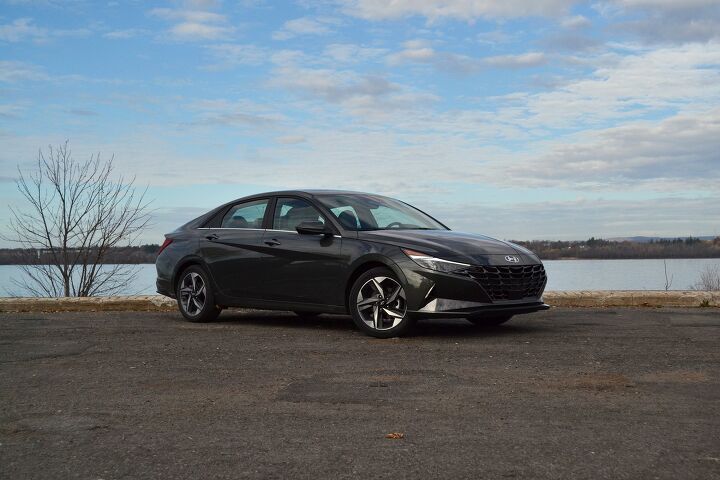



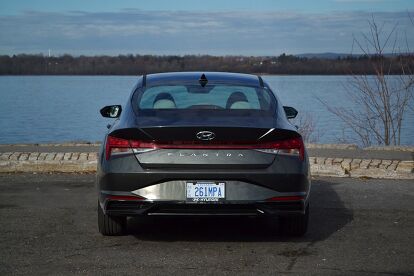









































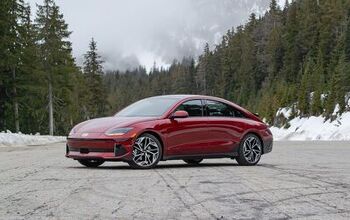
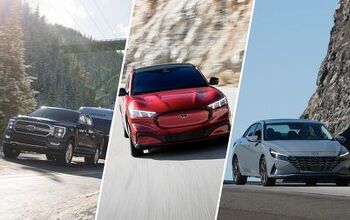


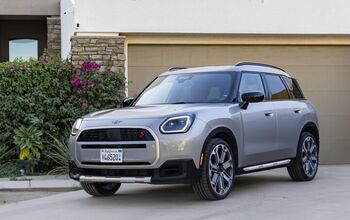

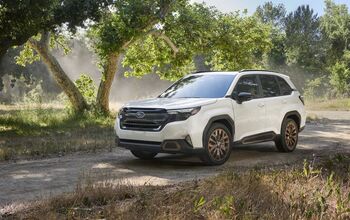
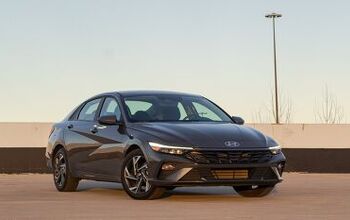





Comments
Join the conversation